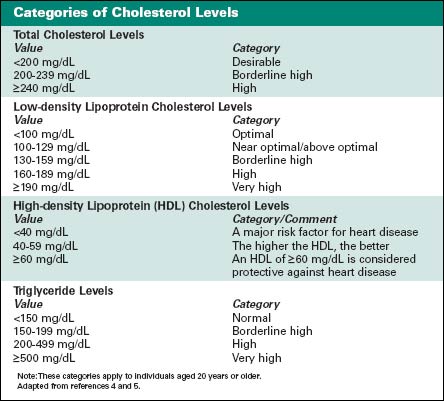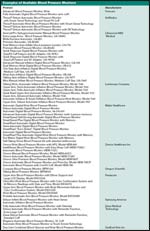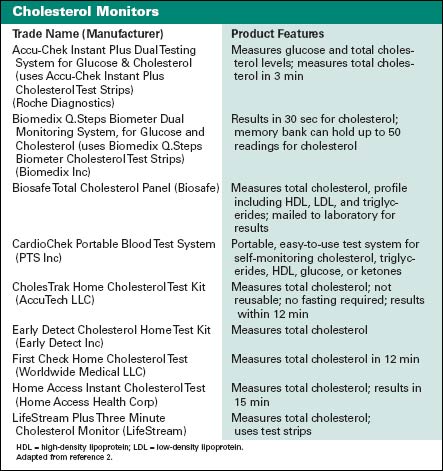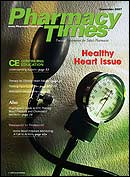A Pharmacist's Guide To OTC Therapy
Blood Pressure Monitors
Pharmacists can provide patients with valuable information about blood pressure monitors, including product selection and proper utilization, that may be advantageous to the management of their blood pressure. Statistics from the American Heart Association report that hypertension accounted for 54,186 deaths in 2004, and as many as 72 million individuals over 20 years of age have elevated blood pressure, which accounts for approximately 1 in every 3 individuals. 1 A growing need is apparent to increase awareness about the importance of monitoring one's blood pressure, since an estimated 33% of individuals with hypertension are unaware that they have the condition.1 Of the individuals who have been diagnosed with hypertension, only an estimated 61% are currently being treated, and only 35% of those have their blood pressure under control.1
Tips for Self-monitoring Blood Pressure
- Always take blood pressure at the same time each day. Check with your doctor to determine how often to take readings.
- Prior to taking a reading, make sure the room is a comfortable temperature
- Empty bladder before testing, since a full bladder may affect readings
- Ensure the cuff is properly fitted on arm
- Allow ample time to relax prior to taking blood pressure
- Prior to taking a reading, rest in a chair next to a table for at least 3 to 5 minutes
- Sit up straight with your back against the chair, legs uncrossed with feet flat on the floor. Rest your forearm on the table with the palm of your hand facing up.
- If needed, roll up the sleeve on your arm or remove any tight-sleeved clothing
- If using an arm cuff, your arm should rest comfortably on a table to ensure arm is at heart level
- If using a wrist cuff, the wrist should be at heart level by using pillows under the arm
- Do not smoke within 30 minutes or drink caffeinated beverages within 60 minutes of taking a reading
- Do not talk or eat while taking a reading
- Always take 2 readings at least 2 minutes apart to confirm reading
- Routinely check batteries on electronic models
- Keep a record of your readings to discuss with your physician
- Compare your results with your primary health care provider's results
Adapted from references 2-4, 6
While counseling patients, pharmacists are often presented with various opportunities not only to educate patients about their medications, but also to increase their awareness about hypertension, as well as the importance of adhering to their treatment protocol, including nonpharmacologic measures, which include lifestyle modifications such as diet and exercise. Pharmacists also can stress the importance of routine self-monitoring, which allows patients to keep track of the progress of their therapy and also may improve their control of blood pressure by increasing compliance to therapy, thus decreasing possible complications associated with uncontrolled blood pressure.
Since a wide variety of blood pressure monitors are available, pharmacists may receive inquiries about the proper selection of a blood pressure monitor. Essentially, 2 types of monitors are available for home use: aneroid and digital (electronic).2,3 Since the proper use of aneroid monitors is dependent upon various factors, such as good eyesight, hearing, and dexterity, many individuals, especially the older individual, may prefer to use an electronic monitor.3 Digital monitors may have a semi-automatic (manually inflating) or completely automatic inflatable (auto-inflating) cuff. When recommending an arm-type monitor, pharmacists should stress the importance of selecting a monitor with proper cuff size to accommodate the circumference of the upper arm in order to obtain accurate results. Digital monitors are available for the upper arm or the wrist. Although compact and portable, some studies suggest that wrist monitors may not be as accurate as upper arm monitors, and errors may occur due to differences in the positioning of the wrist relative to the heart when taking readings.3-5 Patients should be instructed on the proper use of monitors to ensure accuracy of results.
Table

Selection of blood pressure monitors may be based upon various factors that include cost, cuff size, ease of use, memory features, easy-to-read digital display, reliability, and accuracy. Some monitors have standard size cuffs, while some are available with various cuff sizes to accommodate the individual needs of a patient. With the vast array of blood pressure monitors available, pharmacists can convey to patients that monitoring one's blood pressure can easily be incorporated into one's daily routine. Pharmacists can further assist patients by ensuring that they clearly understand the proper use of these monitors as well as factors that may produce inaccurate results. Pharmacists should also remind patients to always discuss the results with their primary health care provider. By increasing awareness about hypertension, pharmacists can empower their patients with the necessary knowledge to maintain normal blood pressure and positively affect their health. For more information on the specific features of these monitors, please visit the manufacturer Web sites.
References
- High Blood Pressure Statistics. American Heart Association Web site. Available at: www.heart.org/print_presenter.jhtml?identifier=212. Accessed on October 1, 2007.
- Rosenthal WM, Briggs GC. Home Testing and Monitoring Devices. In: Berardi RR, Kroon LA, McDermott JH, Newton GD, Oszko GD, Popovich NG, Remington TL, Rollins CJ, Shimp LA, Tietze KJ. Handbook of Nonprescription Drugs. 15th ed. Washington, DC: American Pharmacists Association; 2006:1070-1072.
- Selecting and Using a Home Blood Pressure Monitor. John Hopkins Medical Center Web site. Available at: www.hopkinshospital.org/health_info/Heart/Reading/homemonitor.html. Accessed on October 1, 2007.
- High Blood Pressure: Get the most out of home monitoring. Mayo Clinic Web site. Available at: www.mayoclinic.com/health/high-blood-pressure/HI00016. Accessed on October 1, 2007.
- Home Monitoring of High Blood Pressure. The American Heart Association Web site. Available at: www.americanheart.org/presenter.jhtml?identifier=576. Accessed on October 1, 2007.
- Hypertension: In-Home Blood Pressure Monitoring. WebMD Web site. Available at: www.webmd.com/hypertension-high-blood-pressure/guide/hypertension-home-monitoring. Accessed on October 1, 2007.
Cholesterol Monitors
Pharmacists play an important role in educating patients about monitoring their cholesterol at home.
Statistics from the American Heart Association report that an estimated 105.2 million Americans aged 20 years and older have a total cholesterol of 200 mg/dL and higher. Furthermore, of this number, an estimated 36.6 million individuals have a total cholesterol level of 240 mg/dL or higher, and approximately 10% of adolescents between the ages of 12 and 19 years have total cholesterol levels that exceed 200 mg/dL.1 The Table lists categories of cholesterol levels.

Table—Examples of Available Blood Pressure Monitors. For a larger version, click the image.
Clearly, a need exists to increase awareness about hyperlipidemia, as pharmacists are likely to encounter patients with inquiries about hyperlipidemia and its management. Pharmacists also are in a key position to identify patient populations at a greater risk for elevated cholesterol levels and therefore stress the importance of getting cholesterol levels routinely tested. The National Cholesterol Education Program suggests that starting at the age of 20 years, individuals should have their lipid levels measured at least every 5 years; however, patients with known hyperlipidemia or risk factors will require more frequent testing.2 While some risk factors for hyperlipidemia such as age, gender, and familial history are nonmodifiable, pharmacists can educate patients about those risks factors that are modifiable— eg, diets high in saturated fats, being overweight, a sedentary lifestyle, a history of smoking, and uncontrolled diabetes and hypertension.3 Studies report that a 10% decrease in total cholesterol may result in an estimated 30% decrease in the occurrence of coronary heart disease.1
OTC Cholesterol Tests
Some patients may not be aware that at-home cholesterol testing kits have been available over the counter since 1993. Pharmacists are in a key position to increase awareness among patients about the options available for monitoring cholesterol levels at home. Currently, various at-home cholesterol tests are available, and while the majority of athome cholesterol tests measure only total cholesterol, a few tests also can measure low-density lipoprotein (LDL) and high-density lipoprotein (HDL) cholesterol and triglycerides. In addition, individuals with diabetes may consider using monitors that measure glucose levels and cholesterol levels.
Role of the Pharmacist
Prior to recommending any of these testing kits, pharmacists should ascertain if the use of these tests is appropriate for the patient, since patients with any coagulation disorders or those taking anticoagulants should not use these kits due to an increased risk of excessive bleeding from the finger stick.2 These patients should be encouraged to seek the advice of their primary health care provider for testing. In addition, it is essential for pharmacists to thoroughly counsel patients about key points regarding the proper use of these tests, such as washing and drying hands thoroughly before testing, as well as sitting still and relaxing for approximately 5 minutes before testing, and pharmacists should review testing procedures, including the importance of obtaining an adequate sample size.2
Table

It also is imperative to convey information about the possible factors that may interfere with obtaining accurate test results. Examples of these interferences include avoiding doses of ≥500 mg of vitamin C and avoiding acetaminophen or naproxen within 4 hours of testing, since these factors may interfere with results.2
Although the use of at-home cholesterol testing is a quick and easy tool for patients to use, patients should always be reminded to follow up with a their physician for a more thorough evaluation especially if they have any concerns, have any cardiovascular risks factors, or in cases where patients obtain results of a total cholesterol of ≥200 mg/dL, an HDL of ≤40 mg/dL, or triglycerides of ≥150 mg/dL.
Cardiovascular disease continues to be the leading cause of death in the United States, accounting for an estimated 700,000 deaths annually.6 These alarming figures should motivate health care professionals to seize every possible opportunity to encourage patients to take proactive roles in their cardiovascular health to improve the quality of their lives.
For patient information on lowering cholesterol, please visit the National Institutes of Health's National Heart, Lung, and Blood Institute's Your Guide to Lowering Cholesterol with Therapeutic Lifestyle Changes (TLC) at www.nhlbi.nih.gov/health/public/heart/chol/chol_tlc.htm.
References
- High Blood Cholesterol and Other Lipids - Statistics, American Heart Association Web site. Available at: www.americanheart.org/downloadable/heart/1168553578336CHOL07.pdf.
- Berardi R, et al. Handbook of Nonprescription Drugs 15th Edition.
- High Blood Cholesterol: What You Need to Know, National Cholesterol Education Program Web site. Available at: www.nhlbi.nih.gov/health/public/heart/chol/wyntk.htm.
- What are Healthy Levels of Cholesterol? American Heart Association website. Available at: www.americanheart.org/presenter.jhtml?identifier=183.
- The Cholesterol Heart Disease Connection. National Heart and Blood Institute website. Available at: nhlbisupport.com/chd1/HBC.htm.
- Heart Disease. Centers for Disease Control and Prevention website, Available at: www.cdc.gov/heartdisease.

